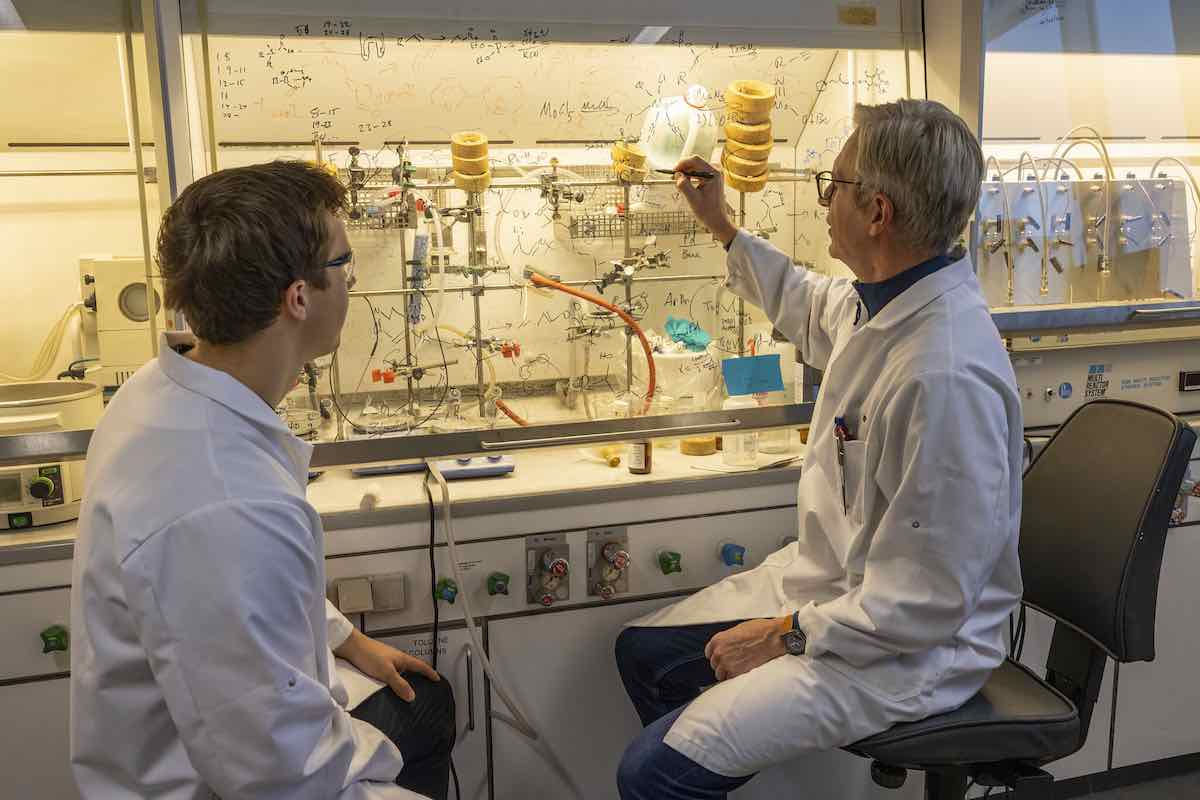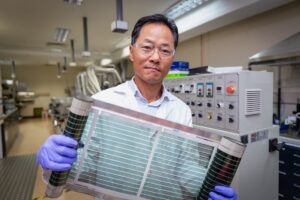Wind energy uptake is soaring, particularly in Australia where it grew by nearly 20% in 2021. But the wind sector has an oversized problem on its hands: its massive blades, made up of carbon or glass fibre-reinforced epoxy plastic composites, have until now proven almost impossible to recycle.
Generally speaking, when a turbine reaches the end of its lifespan, its blades must be hauled away, sawn apart, and discarded in landfills – a practice that is now illegal in some European countries, with WindEurope calling for a bloc-wide ban by 2025.
Based on the current uptake of wind power in Australia, Professor Peter Majewski, of the Future Industries Institute at UniSA, estimates about 10,000 tonnes of turbine blade waste will end up in landfill per year in the next few years alone, jumping to around 300,000 tonnes per year by 2050.
A team of Denmark-based researchers say they’ve found a novel way to break down the tough plastic that makes up wind-turbine blades, recovering useful materials in the process.
As described in a new paper in the journal Nature, the researchers, from Aarhus University and the Danish Technological Institute, have developed a novel chemical process in which the blade material is submerged in a solvent spiked with a catalyst called ruthenium, and heated to 160°C.
After several days in this mixture, the blade material is broken down into its constituent parts, including bisphenol A (an expensive and useful material for building new composites), and the intact carbon and glass fibres that were embedded in the original material.
In their study, the researchers applied the method to unmodified epoxy resins as well as to commercial composites – epoxy-based products that had been created and used in practice, including the shell of a wind turbine blade.
The paper presents a proof of concept that these materials can be broken down into usable, retrievable parts. But it’s thus far only been done in miniature, in a test tube.
Moreover, the energy required and the catalyst used make the capital costs for such a procedure expensive.
“Nevertheless, we see it as a significant breakthrough for the development of durable technologies that can create a circular economy for epoxy-based materials,” says Troels Skrydstrup, one of the lead authors of the study.
“This is the first publication of a chemical process that can selectively disassemble an epoxy composite and isolate one of the most important building blocks of the epoxy polymer as well as the glass or carbon fibres without damaging the latter in the process.”
Majewski, who is a materials scientist, cautions that such a method, while it could be useful on a case by case basis for retrieving useful materials, is unlikely to be a scalable solution to the wind turbine problem.
“Ruthenium is a very rare element,” says Majewski. “And using something like this for such an application, where you’d need to upscale quite significantly, I’m not sure there’s even enough ruthenium around to do this.”
And Majewski says ruthenium isn’t the only problematic material in the reaction. Tuloene, the solvent used to dissolve the epoxy, is a solvent commonly used in paint thinners, nail polish removers, and various other chemical reactions.
“Tuloene is not really something you would like to have around in large quantities,” he says. “You’re producing secondary waste in large quantities.”
This novel process may prove useful for recycling smaller quantities of these materials, which are found not just in wind turbines but in electric cars, aeroplane wings, and boat hulls. But the long-term problem remains pressing.
In fact, Majewski isn’t confident that recycling wind turbine blades, made up as they are of such complex materials, can be done.
Instead, he would like to see a more radical solution to the problem: by changing the very structure of wind turbines themselves.
“In the long term, discussion should go in the direction of developing new wind turbine technologies which are not relying on these huge propellers,” Majewski says.
Such technologies could include vertical axis turbines, which rotate around an axis that’s vertical to the Earth’s gravitational pull, or bladeless, ‘wobbling’ turbines, like those developed by Madrid company Vortex Bladeless.
Majewski is sceptical that these alternative technologies could become mainstream, though, given the current commercial incentives to build wind turbines as quickly as possible.
“There’s so much money in the development of wind farms that they are not too much interested in changing the technology,” he says.










